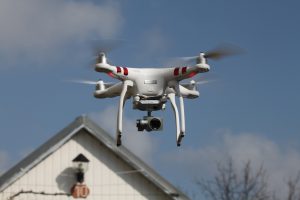Protecting complex machinery and keeping high-value assets performing at peak efficiency are top priorities for many enterprises, from manufacturers to construction firms and companies in mining and drilling. Power plants, hospitals, security, and transportation systems, like subways and trains, also rely on uninterrupted operations.
Because of this “can’t fail” requirement, considerable resources have been allocated to preventive maintenance and aftermarket service, including R&D around some innovative uses of technologies. IM&E companies of all sizes can now take advantage of these breakthrough applications and apply the concepts in their organizations.
Behind the motivation
While preventive maintenance and aftermarket service have long been considered critical aspects of the IM&E industry, these are now more important than ever. Machinery within manufacturing plants or mining operations, massive pieces of equipment for road work or construction, and mission-critical devices like generators are simply too high-cost and high-priority to risk failure. They are also more complex and at greater risk of malfunction, from proper integration of high tech components to compatibility of platforms and release versions of the computerized components.
Unexpected downtime can be devastating, not only to keeping global enterprises running as needed, but in extending the lifecycle of the valuable machinery. Big equipment usually means considerable investments, and high-impact financial stakes.
This is why enterprises have been able to justify extensive R&D budgets on making the maintenance department and service operation super-efficient. This includes more than the basics, like making sure spare parts are available. The new, advanced IM&E maintenance operation turns to innovative concepts to improve reliability. Here are just a few examples:
 Putting Modern Technology to Work:
Putting Modern Technology to Work:
3D printing: This is valuable technology for creating spare parts that are not readily available. This can be because the supplier keeps limited inventory or is located continents away. The spare parts may be so large that they cannot be air-shipped overnight, adding to the potential delay. 3D printing allows the enterprise to recreate the needed piece or to recreate molds, template or tooling used in manufacturing the spare part.
Sensor readings: Embedded sensors on equipment can provide a wide variety of information about the condition of the machine and how it is performing. Temperature, vibration, volume, and weight are common examples of physical conditions which can be measured and monitored. The data can be used to spot early stages of degradation. When potential problems are detected early, prompt intervention can keep the issue from cascading.
Predictive forecasting: Advanced analytics can also be used to forecast stages in the typical lifecycle so the maintenance department can plan ahead and schedule during off-times any necessary calibration, replacement of consumables like filters, and replacement of eroding parts before they fail. Virtual Reality and holographic simulations: As the current workforce reaches retirement age, companies need to step up the recruitment and training of new technicians. To speed the process and massive transference of equipment knowledge, companies are turning to virtual reality and simulation environments to help train recruits, allowing them to “practice and fail” in safe environments, rather than endanger the actual machinery.
Wearables and video transmissions: The use of video transmissions is another innovation that has been driven by the shortage of skilled technicians. Rather than sending the one or two senior technicians on job sites, wasting valuable time on travel, junior technicians can be sent to the site equipped with wearable technology. The wearable can be a helmet which contains a video camera to broadcast to the senior technician a view of the troubled equipment. The senior technician can communicate back with audio or send to glasses or a wrist device images, such as schematics, to help the trainee visualize the proper activity.
 Remote controlled robotics: Many times robots can be more accurate and cost effective for performing certain repairs or maintenance steps. This is especially true when the piece of equipment is in a remote location or a site dangerous to humans, such as equipment used around molten metals, toxic fumes, highly combustible gases, or at dangerous heights. In these cases, robotics can be used to conduct basic calibration adjustment, break-fix repairs, or replacement of standard parts, like belts or bearings which wear out.
Remote controlled robotics: Many times robots can be more accurate and cost effective for performing certain repairs or maintenance steps. This is especially true when the piece of equipment is in a remote location or a site dangerous to humans, such as equipment used around molten metals, toxic fumes, highly combustible gases, or at dangerous heights. In these cases, robotics can be used to conduct basic calibration adjustment, break-fix repairs, or replacement of standard parts, like belts or bearings which wear out.
Drones: Small aerial drones, flown by remote control, are also being used to reach equipment or machinery in circumstances where it may be dangerous or impractical to send a technician. Drones can be used to take video, capture sensor readings, conduct X-rays, or take ultrasound images of equipment, providing valuable diagnostic aids to technicians.
Next steps
For IM&E manufacturers and service providers, it is important to keep informed about new technology available and stay on top of innovation in the field. It is easy to become overwhelmed with the possibilities and, therefore, tune out the many advancements that seem to occur at rapid-fire rates. Being out of touch is dangerous, creating risks of becoming obsolete. Although new technologies often involve a capital investment, this shouldn’t be a roadblock. Technology solutions often pay-off very quickly in savings of time and prevention of lost performance. Cloud deployment, which involves a monthly fee rather than one-time investment, may be a sound option for technologies like analytics and IOT tools for capturing sensor readings. Above all, some action is better than no action. Taking incremental actions can be good early steps in the journey. Even enacting a few tactics, if not all, will be valuable in helping to optimize the maintenance and service operation.


















